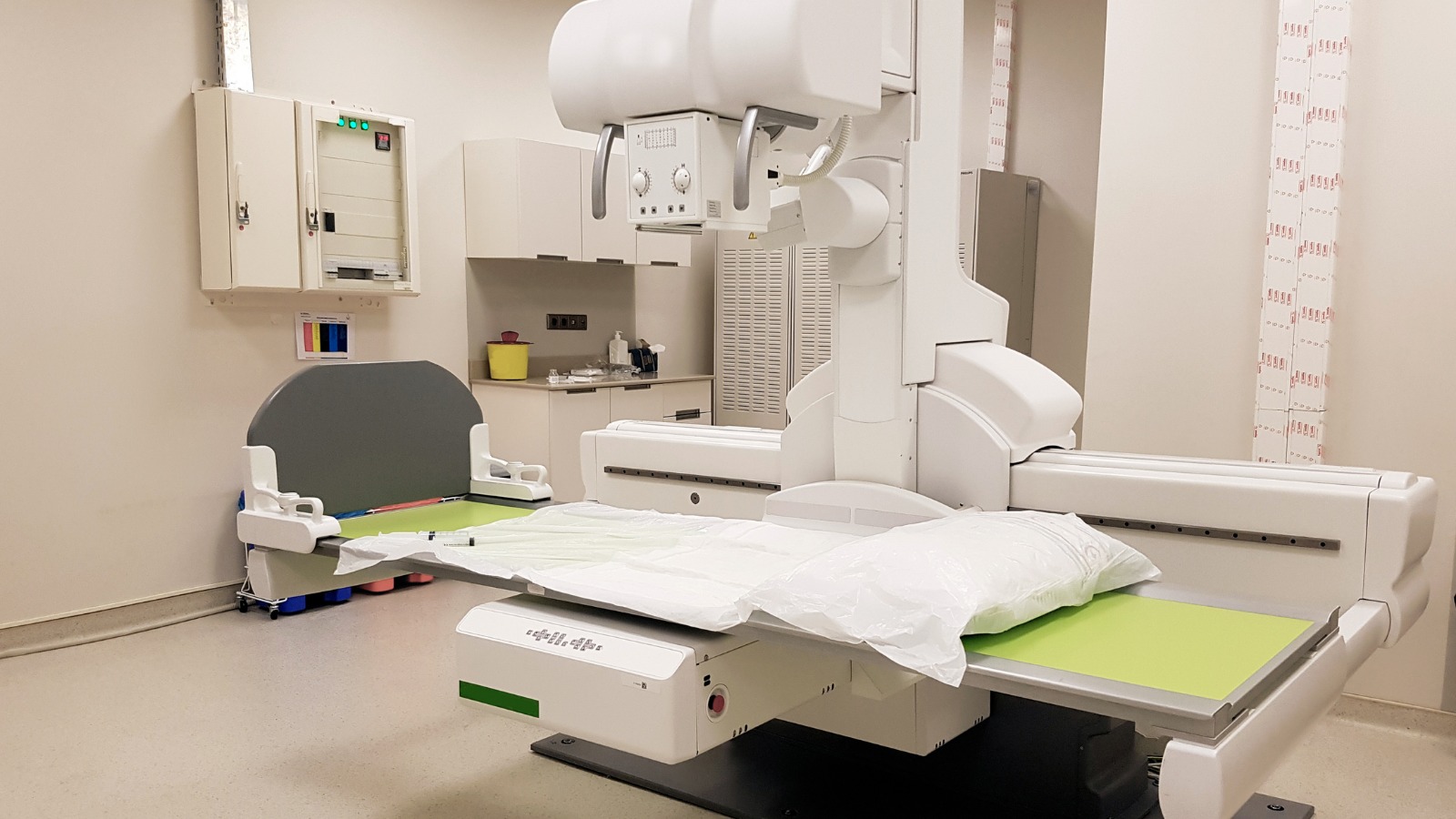
In medicine, diagnosis is no longer limited to the doctor’s experience; advanced imaging methods now allow us to see detailed views of our internal organs and tissues. Among the most commonly used of these methods are fluoroscopy and X‑ray. So, what exactly do these two methods do, and what are the differences between them?
What Is Fluoroscopy?
Fluoroscopy is an imaging method that allows real‑time observation of the movements of organs or structures inside the body. Simply put, fluoroscopy is like a “live X‑ray.”
How Does Fluoroscopy Work?
During fluoroscopy, continuous X‑rays are emitted and the resulting images are displayed on a monitor. This allows doctors to observe step‑by‑step how internal organs function. It is especially useful for moving organs like the stomach, intestines, and bladder.
When Is It Used?
Fluoroscopy is preferred for disorders of moving organs such as digestive system problems, swallowing difficulties, urinary tract issues. It is also used as a guide during some orthopedic surgeries or catheter placements.
Types of Fluoroscopy
- Contrast fluoroscopy: Uses barium or iodine‑based contrast agents to make organs clearly visible.
- Real‑time fluoroscopy: Used to observe the actual function of moving structures.
What Is X‑Ray?
X‑ray is one of the most common imaging techniques, offering a single instantaneous image of the body's internal structure. It is especially used for imaging bones.
Basic Principles of X‑Ray Technology
An X‑ray device emits X‑rays. As these rays pass through the body, they are absorbed at different rates by different tissues. For example, bones appear white because they are denser, while soft tissues appear in shades of gray.
When Is X‑Ray Used?
- Bone fractures
- Lung infections
- Dental issues
- Chest region problems
What Is Digital X‑Ray?
Digital X‑ray, replacing traditional film, allows images to be captured in high resolution on a computer. It involves less radiation and results are obtained more quickly.
Key Differences Between Fluoroscopy and X‑Ray
- Imaging duration: X‑ray captures only a single frame, while fluoroscopy provides continuous, video‑like imaging.
- Observation of moving structures: Fluoroscopy allows monitoring of processes like stomach movement or intestinal transit, whereas X‑ray provides static images.
- Radiation dose comparison: Because fluoroscopy uses continuous X‑rays, it involves higher radiation than X‑ray and requires controlled usage.
- Usage and expertise: Fluoroscopy is used in procedures requiring special training and expertise, whereas X‑ray is more commonly administered and easier to apply.
When to Use Which Method?
- If imaging a static structure (e.g. a broken bone), X‑ray is sufficient.
- If observing a dynamic process (e.g. gastric emptying), fluoroscopy is preferred.
- X‑ray generally requires no preparation, but fluoroscopy may need fasting and contrast ingestion.
Advantages & Disadvantages
Fluoroscopy Advantages:
- Provides real‑time imaging
- Useful for dynamic processes
- Guides interventions
X‑Ray Advantages:
- Inexpensive and widely available
- Quick results
- Lower radiation (especially digital X‑ray)
Limitations of Both Methods
- Fluoroscopy: Higher radiation, more expensive, requires expertise
- X‑Ray: Only offers static images, limited detail in soft tissues
Fluoroscopy and X‑ray may seem similar but serve different purposes. X‑ray is ideal for static structures and rapid diagnosis; fluoroscopy offers real‑time observation in dynamic and complex processes. The choice between them is determined by diagnosis, patient condition, and physician guidance. Both are indispensable tools in modern medicine.
FAQs
- Is fluoroscopy painful?
No, fluoroscopy is generally painless. However, ingesting or injecting a contrast agent beforehand may cause discomfort. - Can I return to daily life after fluoroscopy?
Yes, most of the time you can. But if contrast was used, some rest afterward may be needed. - Which is more harmful: X‑ray or fluoroscopy?
Fluoroscopy involves more radiation, so it's used with greater caution—but it is safe when performed briefly. - Is fluoroscopy available in every hospital?
No, because it requires specialized equipment and expertise, it may not be available in all hospitals. - Are X‑ray or fluoroscopy performed during pregnancy?
Not unless absolutely necessary. Decisions are made under medical supervision and risk assessment.